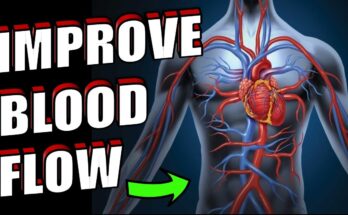Spider Bites Symptoms: Spider bites, though often harmless, can sometimes lead to severe reactions. Understanding the symptoms of spider bites is crucial for timely and effective treatment.
This awareness can prevent complications and ensure safety, especially in regions with venomous spiders. Recognizing these signs is the first step towards appropriate care.
What Are Spider Bites?
Spider bites occur when a spider injects venom into the skin through its fangs. Although most spider bites are harmless and cause only minor symptoms, some can be dangerous and require immediate medical attention. Understanding the types of spiders that commonly bite humans can help in identifying and treating bites effectively.
Types of Spiders Commonly Involved in Bites Affecting Humans
- Black Widow Spider: Known for the distinctive red hourglass shape on its abdomen, the black widow’s bite can cause severe pain and muscle cramps. Immediate medical attention is necessary as their venom can affect the nervous system.
- Brown Recluse Spider: This spider can be identified by the violin-shaped mark on its back. Brown recluse bites can lead to severe skin damage and necrosis. These bites are dangerous and require prompt medical treatment to manage the skin damage and prevent infection.
- Hobo Spider: Often mistaken for the brown recluse, the hobo spider’s bite can also cause significant pain and necrosis. While not as toxic as the brown recluse, medical advice is still recommended to handle potential skin reactions.
- Wolf Spider: Although their bite is primarily defensive and not toxic to humans, it can be painful and cause redness and swelling. A wolf spider’s bite is generally harmless, but cleaning the wound and monitoring for infection is advised.
- Common House Spider: Typically, bites from house spiders are harmless and result in minimal, localized itching and irritation. These spiders bite only if provoked and pose little threat to humans.
If a spider bite is suspected, especially from species known to be harmful, seeking medical advice is strongly recommended. This ensures the correct management and treatment of the bite, preventing complications and promoting faster recovery.
Identifying Spider Bites
Spider bites can often be mistaken for other insect bites, but recognizing them correctly is crucial for effective treatment. Here’s how you can identify spider bites and distinguish them from other types of insect bites.
General Characteristics of Spider Bites
- Initial Pain and Redness: Spider bites typically begin with slight pain, similar to a pinprick, followed by redness in the area.
- Swelling: A noticeable swelling often occurs around the bite. This swelling may spread depending on the type of spider.
- Itching or Rash: An itchy rash may develop. This symptom varies widely among individuals and depends on the body’s reaction to the venom.
- Two Puncture Marks: Unlike most insect bites, spider bites often leave behind two closely spaced puncture marks where the spider’s fangs have penetrated the skin.
- Localized Symptoms: Depending on the spider, symptoms may remain localized to the area of the bite or spread.
- Systemic Symptoms: In more severe cases, such as bites from black widow or brown recluse spiders, symptoms can include muscle pain, fever, headache, and fatigue.
How to Distinguish Spider Bites from Other Insect Bites
- Bite Mark Characteristics: Spider bites are distinguished by two fang marks. In contrast, mosquito bites are more uniformly round and puffy with a single puncture point at the center.
- Symptom Progression: Spider bite symptoms can escalate quickly, particularly with venomous spiders. Other insect bites, like those from mosquitoes or ants, tend to have a more consistent symptom progression.
- Location and Circumstance: Consider where and when the bite occurred. Spiders often bite when disturbed in hidden places like old wood piles, garages, or while putting on seldom-used clothing.
- Reaction Speed: Spider bite reactions can be immediate or develop over several hours. This contrasts with flea bites, which might not become apparent until a few hours after the bite.
- Necrotic Wounds: Certain spider bites, particularly from a brown recluse, can cause necrosis where the bitten skin becomes bluish or black with a crater-like appearance. This is not typical for other insect bites.
By paying attention to these signs and symptoms, you can better identify spider bites and seek appropriate medical attention if necessary.
Symptoms of Spider Bites
Below, we explore common symptoms of both non-venomous and venomous spider bites, and outline when it’s necessary to seek medical attention.
Common Symptoms of Spider Bites
Most spider bites are harmless and produce only minor symptoms, which include:
- Redness: A small area of reddening around the bite site.
- Swelling: Mild to moderate swelling that typically remains localized.
- Pain: A sharp pain at the moment of the bite, often subsiding to a dull ache.
- Itching: An irritating itch that may persist for several days.
These symptoms usually resolve on their own within a few days and can be treated at home with over-the-counter pain relievers, ice packs, and antihistamines.
Symptoms of Non-Venomous Spider Bites
Non-venomous spider bites, while often slightly uncomfortable, are generally harmless and exhibit the following symptoms:
- Mild redness and swelling: The area around the bite may become slightly swollen and reddened but does not spread significantly.
- Itchiness: A non-venomous bite may cause itching around the bite area, which can be relieved with topical treatments.
Symptoms of Venomous Spider Bites
Venomous spider bites, such as those from black widows or brown recluses, can cause more severe symptoms and require immediate medical attention. Symptoms include:
- Intense pain at the bite site: Pain can be immediate and severe, potentially spreading to other areas.
- Muscle cramps and spasms: Particularly with black widow bites, severe muscle pain and cramping can occur within hours of the bite.
- Gastrointestinal symptoms: This includes nausea, vomiting, and abdominal pain.
- Sweating and chills: Systemic reactions including fever, chills, and sweating may occur.
- Lesions or a rash: In the case of a brown recluse bite, the bite site may develop a blister and form a necrotic lesion that requires medical treatment.
When to Seek Medical Attention for Spider Bites
Medical attention should be sought immediately if you experience any of the following after a spider bite:
- Severe pain, swelling, or redness: If symptoms are escalating rather than improving.
- Signs of infection: Such as increasing warmth at the bite site, pus, or red streaks leading away from the area.
- Systemic symptoms: Including fever, chills, dizziness, or difficulty breathing.
- Uncertainty about the spider type: If there’s a possibility that the spider was venomous.
Prompt treatment is key in managing severe reactions and complications from spider bites. Knowing these symptoms and when to seek help can prevent serious consequences and ensure proper care is administered.
Causes of Spider Bites
Understanding the common causes and scenarios that lead to these bites can help in taking preventive measures. Here, we explore the typical scenarios, spider behavior, and environmental factors contributing to spider bites.
Typical Scenarios Leading to Spider Bites
- Disturbing Their Webs or Nests: People often get bitten when they accidentally disturb a spider’s living area. This includes reaching into corners, old boxes, or piles of wood where spiders may have made a home.
- Gardening Activities: Engaging in gardening activities without wearing gloves can lead to spider bites, especially when handling piles of leaves, debris, or hidden areas under rocks.
- House Cleaning: Cleaning activities such as sweeping, dusting, or decluttering can provoke spiders hiding in secluded spots, leading to defensive bites.
- Moving or Storing Items in Garages or Sheds: Spiders often reside in dark and less frequented places. Moving items or digging through storage boxes can disturb these arachnids, resulting in bites.
Behavior of Spiders Contributing to Bites
- Defensive Biting: Spiders typically bite as a defense mechanism. They bite if they feel trapped or threatened, such as when accidentally pressed against human skin.
- Hunting Mistakes: Occasionally, a spider might mistake a human for its usual prey during night-time, leading to accidental bites.
- Protecting Their Eggs: Female spiders may bite if they perceive a threat to their eggs or newly hatched spiders, which are often co-located in their web.
Environmental Factors That Increase the Likelihood of Spider Bites
- Seasonal Changes: The likelihood of encountering spiders increases in certain seasons, such as during warm and humid periods when insect activity is high.
- Cluttered and Undisturbed Spaces: Environments that are cluttered and rarely disturbed provide ideal hiding spots for spiders, thereby increasing the chances of human contact and bites.
- Outdoor Recreational Activities: Engaging in outdoor activities such as hiking, camping, or sitting around in areas with heavy foliage can increase the risk of spider bites.
- Presence of Insects: Areas with high insect activity attract spiders since they are a primary food source for them. Consequently, these areas may pose higher risks of bites.
However, always consider wearing protective clothing in areas known to harbor spiders and maintaining cleanliness in and around your home to minimize risks.
Treatment Options for Spider Bites
Here, we explore first aid measures, indications for when to see a doctor, and treatment options for both serious and non-threatening spider bites.
First Aid Measures Immediately After a Spider Bite
- Clean the Bite: Wash the area with soap and water to remove the spider’s venom and prevent infections.
- Apply a Cold Compress: Use a cold pack or a cloth dampened with cold water to reduce swelling and alleviate pain.
- Elevate the Affected Area: Keeping the bitten area elevated can help reduce inflammation and discomfort.
- Avoid Agitating the Bite: Refrain from scratching or puncturing the bite to prevent further irritation or infection.
- Observe Symptoms: Monitor for any signs of allergic reactions or infection, such as increased redness, swelling, or intense pain.
When to See a Doctor – Treatment Procedures for Serious Reactions
It is crucial to seek medical attention immediately if you experience any of the following symptoms after a spider bite:
- Difficulty Breathing or Swallowing: These symptoms may indicate a severe allergic reaction.
- Muscle Pain or Cramping: Severe bites, especially from black widow spiders, can cause intense muscle cramps or spasms.
- Fever, Chills, or Sweating: These symptoms can accompany serious bites and might suggest systemic infection.
- Headache, Dizziness, or Blurred Vision: These are concerning symptoms that require immediate medical evaluation.
- Rash or Blistering: A severe reaction may cause a rash or blisters around the bite area or beyond.
Medical treatments for serious spider bites may include antivenom, pain relievers, tetanus vaccination, and antibiotics to prevent or treat infection.
Home Remedies and Medical Treatments for Non-threatening Spider Bites
For non-threatening bites, the following treatments can be effective:
- Ice Packs: Regular application of ice packs can help reduce pain and swelling.
- Over-the-Counter Pain Relievers: Medications like acetaminophen or ibuprofen can alleviate pain.
- Antihistamines: These can reduce itching and swelling, especially if the bite causes an allergic skin reaction.
- Aloe Vera: Applying aloe vera gel can soothe the skin and promote healing.
- Baking Soda Paste: A paste made from baking soda and water can be applied to the bite to help reduce itching and inflammation.
By understanding the appropriate first aid measures and when to seek professional medical treatment, you can effectively manage spider bites and minimize their impact on your health.
Prevention Tips for Spider Bites
To ensure safety and minimize the chances of encountering these eight-legged creatures, here are some effective ways to prevent spider bites both indoors and outdoors, alongside safety measures to avoid attracting spiders to your living spaces.
Indoors
- Keep Your Home Clean: Regularly vacuum and dust your home to remove any spiders, webs, and egg sacs. Clutter provides hiding spots for spiders, so declutter rooms to minimize their hiding options.
- Seal Entry Points: Check windows, doors, and walls for cracks or openings. Seal these gaps with caulk to prevent spiders from entering your home.
- Use Essential Oils: Spiders dislike the scent of peppermint, tea tree, citrus, and eucalyptus. Mix a few drops with water in a spray bottle and apply it to corners, windowsills, and doorways.
- Maintain Screens on Windows and Doors: Ensure that all screens are intact and free from tears or holes. This not only keeps spiders out but also other insects, which are primary food sources for spiders.
- Control Humidity: Reduce humidity in your home by using dehumidifiers or ventilating damp areas. Spiders are attracted to moist environments, so keeping the air dry can deter them.
Outdoors
- Keep Gardens Tidy: Regularly prune plants, clear out dead vegetation, and rake leaves to reduce spider-friendly environments. Avoid using outdoor lighting that attracts insects, which in turn can attract spiders.
- Remove External Webs Regularly: Use a broom or a hose to remove any spider webs from the exterior of your home regularly.
- Use Insecticides: If you have a severe spider problem, consider using insecticides around the perimeter of your home. Choose products that are environmentally friendly and safe for pets and children.
- Store Firewood Properly: Keep firewood at least 20 feet away from your home and elevate it off the ground. This prevents spiders from making a home in the woodpile and then migrating into your house.
Safety Measures to Avoid Attracting Spiders
- Proper Lighting: Replace bright outdoor lights with yellow sodium vapor lights, which are less likely to attract insects and, subsequently, spiders.
- Care with Outdoor Furniture and Storage: Regularly check and clean outdoor furniture and storage bins to prevent spiders from settling in.
- Manage Other Insects: Control the population of insects around your home with proper waste management and landscaping. Fewer insects mean fewer spiders.
By following these prevention tips and safety measures, you can significantly reduce the likelihood of encountering spiders in your home and garden, making your environment safer and more comfortable.
FAQs about Spider Bite Symptoms
What are the common symptoms of a spider bite?
Common symptoms of spider bites can include redness, swelling, pain at the bite site, itching, and mild irritation. Some bites might look like a small puncture wound or bruising and can take longer to heal. For certain spider species like black widows or brown recluses, symptoms can be more severe, including muscle pain, abdominal cramps, or more intense pain around the bite.
How can I tell if a spider has bitten me?
Identifying a spider bite can be challenging as it often resembles bites from other insects. However, if you notice a sudden, sharp pain followed by the aforementioned symptoms, a spider bite could be a possibility. Observing the bite area for two small puncture marks can also be a clue, although not all spider bites leave visible marks.
When should I see a doctor for a spider bite?
It’s advisable to seek medical attention if symptoms escalate or if you experience severe reactions such as difficulty breathing, dizziness, or a spreading rash. Additionally, if you suspect the spider was venomous (like a black widow or brown recluse), it’s crucial to get medical help immediately.
How do I treat a spider bite at home?
For non-venomous spider bites, first clean the bite with soap and water. Applying a cool compress can reduce swelling and ease pain. Over-the-counter pain relievers and antihistamines can help manage pain and itching. Keep the bite elevated if possible to further decrease inflammation.
Can spider bites cause long-term damage?
Most spider bites are harmless and do not cause long-term damage. However, bites from venomous spiders like the brown recluse or black widow can lead to more serious complications if not treated promptly. Always monitor the bite for signs of infection or unusual symptoms and consult a healthcare provider if concerns arise.
Conclusion
Recognizing and treating spider bites is crucial for preventing potential health complications. Timely identification helps ensure appropriate medical attention and mitigates the risk of severe reactions. It’s essential to familiarize yourself with the common signs of spider bites and understand when to seek professional help.
Additionally, maintaining preventive measures is your best defense against these pests. Simple strategies such as keeping living spaces clean, sealing cracks and crevices, and using appropriate repellents can significantly reduce the likelihood of spider encounters. Stay vigilant and proactive in implementing these preventive practices to safeguard your health and well-being from spider bites. Remember, prevention is always better than cure.
References
For further reading and to validate the information provided on spider bite symptoms, we have compiled a list of reputable sources. These references offer detailed insights and additional knowledge that can help readers better understand the signs, potential treatments, and when to seek medical advice for spider bites.
- Centers for Disease Control and Prevention (CDC) – This government website provides comprehensive information on various types of spider bites, including symptoms and first aid tips. CDC on Spider Bites.
- Mayo Clinic – Known for its expert health information, the Mayo Clinic offers a detailed guide on symptoms, home remedies, and when to consult a doctor regarding spider bites. Mayo Clinic: Spider Bites.
- WebMD – WebMD provides easy-to-understand information on the identification of spider bites and the necessary steps to take if bitten. WebMD on Spider Bites.
- Healthline – Healthline offers insights into the identification of dangerous spiders and the understanding of various spider bite symptoms. Healthline: Understanding Spider Bites.
These sources are trusted and authoritative, providing readers with accurate and helpful information on dealing with spider bites effectively.



